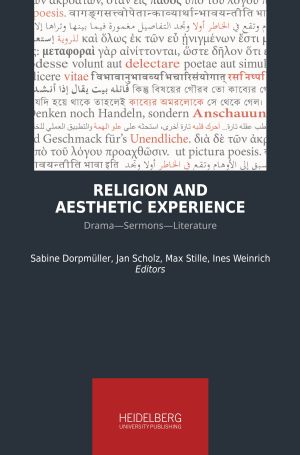Zitationsvorschlag
Lizenz (Kapitel)

Dieses Werk steht unter der Lizenz Creative Commons Namensnennung - Weitergabe unter gleichen Bedingungen 4.0 International.
Identifier (Buch)
Veröffentlicht
Classical Indian Aesthetics and rasa Theory: Observations on Embodied Rhetoric, Reader Response, and the Entanglement of Aesthetics and Religion in Hindu India
Abstract The chapter investigates the historical effectiveness and theoretical power of rasa, one of the key terms of Indian aesthetic theory, denoting here “dramatic effect,” “expression,” “aestheticised emotion,” “emotional flavour,” “mood,” and “aesthetic sentiment.” Rasa aesthetics refer to a theory of affect and effect, and as argued in the chapter may also be viewed as “embodied rhetoric.” The continuities and subtle transformations of rasa aesthetics as embodied rhetoric will be discussed from a historical and systematic perspective starting with its inception in the drama theory of the Nāṭ yaśāstra, through to Ᾱnandavārdhana’s poetics of suggestion, Abhinavagupta’s philosophy of aesthetic immersion, Śārṅgadeva’s musical yoga, Vaiṣṇava devotional rasa-bhāva theology, and finally to everyday speech. Particular emphasis is given to the manifold dovetailing of aesthetics and religion in India, and to two major shifts in perceiving rasa: (a) a shift from production aesthetics to reception aesthetics, reader response, and aesthetic immersion; and (b) (under the influence of the adoption of rasa in devotional religion and theology) from a strict separation of (transpersonal) aesthetic mood (rasa) and (personal) real world emotion (bhāva) to understanding rasa itself as real world emotion—for which, previous to rasa aesthetic theory, no separate term existed.






